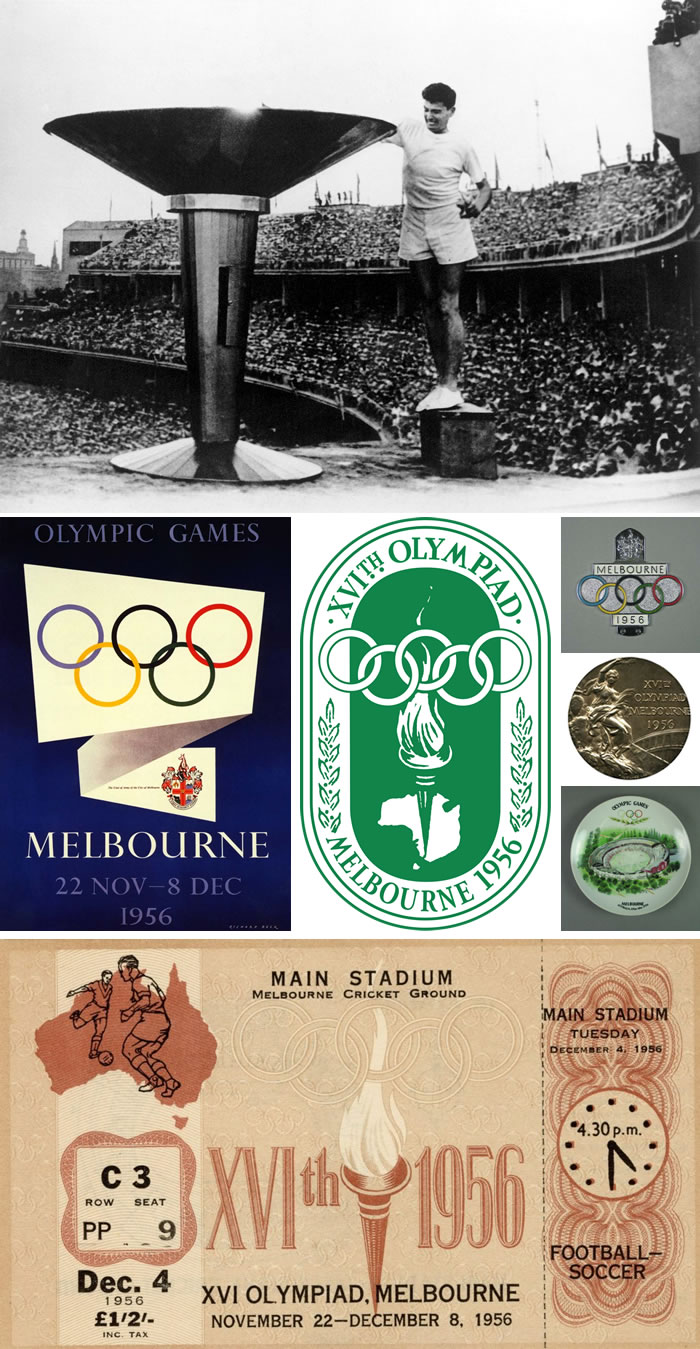Games of the XVI Olympiad | Melbourne |

Melbourne won the right to host the 1956 Olympic Games by one vote over Buenos Aires.
Australian quarantine laws were too severe to allow the entry of foreign horses, so the equestrian events were held separately in Stockholm in June.
Great rivalry
French long-distance runner Alain Mimoun had tasted Olympic defeat on the track three times at the hands of Czech Emil Zatopek. However, in the marathon it was Mimoun who pulled away to record a comfortable victory. He waited at the finish line for Zatopek, his old friend and great rival, who trotted home in sixth place
Dominant team
The US basketball team, led by Bill Russell and K.C. Jones, put on the most dominant performance in Olympic history. They scored more than twice as many points as their opponents and won each of their games by at least 30 points.
Symbol of unity
Prior to 1956, the athletes in the Opening and Closing Ceremonies marched in alphabetical order by National Olympic Committees. However, in Melbourne, following a suggestion by a young Australian named John Ian Wing, the athletes entered the stadium together during the Closing Ceremony as a symbol of global unity.
Laszlo Papp of Hungary became the first boxer to win three gold medals. American Pat McCormick won both diving events, just as she had in 1952. Two athletes dominated the gymnastics competition. On the men's side, Ukrainian Viktor Chukarin earned five medals, including three gold, to bring his career total to eleven medals, seven of them gold. Agnes Keleti of Hungary brought her career total to ten medals by winning four gold medals and two silver. The U.S. basketball team, led by Bill Russell and K.C. Jones, put on the most dominant performance in Olympic history, scoring more than twice as much as their opponents and winning each of their games by at least 30 points. U.S. weightlifter Paul Anderson weighed 137.9kg. In weightlifting, ties are broken by awarding the higher place to the athlete with the lower body weight. Incredibly, this worked to Anderson's advantage when he tied for first with Humberto Selvetti of Argentina. Selvetti weighed 143.5kg. Prior to 1956, the athletes in the Closing Ceremony marched by nation, as they did in the Opening Ceremony. In Melbourne, following a suggestion by a young Australian named John Ian Wing, the athletes entered the stadium together during the Closing Ceremony, as a symbol of global unity.
72 NOCs (Nations)
3,314 athletes (376 women, 2 938 men)
145 events
Opening date 22 November 1956
Closing date 08 December 1956
Ceremonies
Melbourne 22 November 1956. Opening Ceremony. The Olympic flame is lit.
Official opening of the Games by: HRH the Duke of Edinburgh
Lighting the Olympic Flame by: Ron Clarke (athletics)
Olympic Oath by: John Landy (athletics)
Official Oath by: The officials' oath at an Olympic Summer Games was first sworn in 1972 in Munich.
❊ Web Links ❊
➼ Games of the XVI Olympiad | Melbourne
➼ www.olympic.org
Disclaimer: Check with the venue (web links) before making plans, travelling or buying tickets.
Accessibility: Contact the venue for accessibility information.
Update Page








